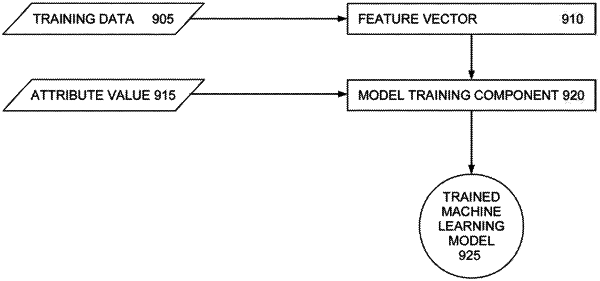| CPC G06N 5/048 (2013.01) [G06N 20/00 (2019.01); G06Q 10/06315 (2013.01); G06Q 50/04 (2013.01)] | 14 Claims |

|
1. A method for automatically manufacturing mechanical parts, the method comprising:
determining a range of effectivity for a first machine learning model, wherein the first machine learning model is a supervised machine learning model, and is trained by a first plurality of existing mechanical parts in database, wherein determining the range of effectivity for the first machine learning model comprises:
generating estimated manufacturing costs for the first plurality of existing mechanical parts using the first machine learning model;
comparing the estimated manufacturing costs with respective actual manufacturing costs of the first plurality of existing mechanical parts; and
subsequently to comparing the estimated manufacturing costs with respective actual manufacturing costs, identifying a minimum manufacturing cost threshold and a maximum manufacturing cost threshold for the first machine learning model;
generating, using one or more computer processors, a first estimate of manufacturing cost for a first mechanical part using the first machine learning model;
upon determining that the first estimate of manufacturing cost for the first mechanical part falls within the range of effectivity for the first machine learning model, and generating, using the one or more computer processors, a second estimate of manufacturing cost for the first mechanical part using a second machine learning model different from the first machine learning model, wherein:
the second machine learning model is a supervised machine learning model, and is trained by a second plurality of existing mechanical parts in database, where each of the second plurality of existing mechanical parts has an estimated manufacturing cost, generated by the first machine learning model, falling within the range of effectivity for the first machine learning model, and
at least one of the first or the second machine learning model is a neural network model;
determining an expected cost error in the second estimate of manufacturing cost for the first mechanical part;
upon determining that the expected cost error falls within a pre-determined acceptable range, facilitating automatic manufacturing of the first mechanical part, comprising:
transmitting computer readable instructions to be read by a computer and automatically trigger a start of the automatic manufacturing of the first mechanical part;
generating, using the one or more computer processors, a third estimate of manufacturing cost for a second mechanical part using the first machine learning model;
upon determining that the third estimate of manufacturing cost for the second mechanical part falls outside the range of effectivity for the first machine learning model, marking the second mechanical part as not suitable for automatic manufacturing;
generating, using the one or more computer processors, a fourth estimate of manufacturing cost for a third mechanical part using the second machine learning model;
determining a second expected cost error in the fourth estimate of manufacturing cost for the third mechanical part; and
upon determining that the second expected cost error falls outside a second pre-determined acceptable range, marking the third mechanical part as not suitable for automatic manufacturing.
|